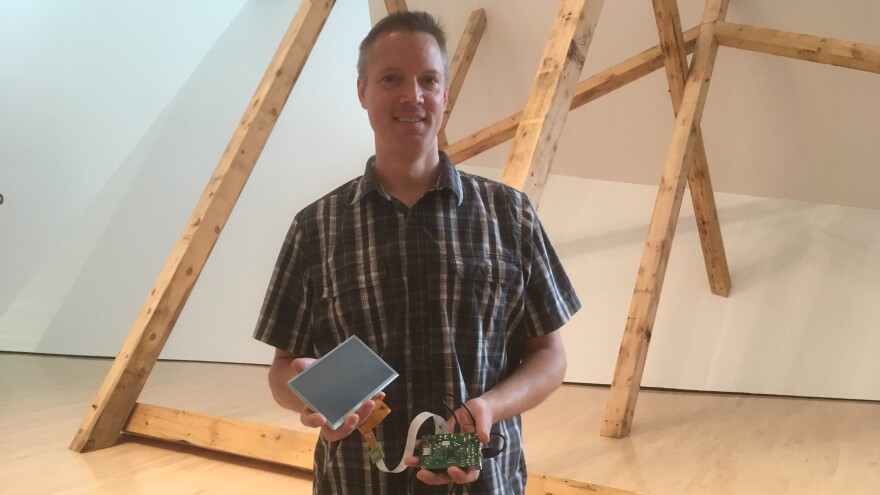If you’ve ever visited an art museum, you’re familiar with the small information signs posted next to the works on display. There, you’ll find the name of the artist, the title of the piece, and other information. At Michigan State University, the Broad Art Museum hopes to use new technology to provide a lot more than the basics.
Imagine if the text on that tiny information sign next to an artwork could flow like the pages of your e-reader, or show you a video of the artist at work, or interact with an app on your smartphone. The Broad Art Museum is looking to expand the world of possibilities though a project called the Smart Label Initiative. The Knight Foundation has awarded the museum a $50,000 grant for the effort to connect people with the arts through technology.
Brian Kirschensteiner is Chief Preparator of Exhibitions at the Broad. He first thought about how technology could help convey information back in the 1990’s, planning interactive kiosks at the MSU Museum. He says many visitors didn’t take the time to use them. “I thought one day, there’s going to be a time with the technology where we can actually create something within the framework of that existing label space," Kirschensteiner says, "but have it have the full interactivity of a kiosk. That day has arrived.”
Instead of the information sign you usually see next to an artwork, you’ll find a small touchscreen capable of telling you a lot more than what you’re used to getting. It could be multilingual, for instance, and Kirschensteiner envisions other possibilities tailored to the visitors on hand. “You could have, for example, five buses of third graders about to show up. Our education team, in their office, can at the push of a button send content to the labels in the museum, bringing everything down to the third grade level and making it fun and interactive for that age group," states Kirschensteiner. "You could have an event with donors or people who would maybe consider themselves experts in a certain field, and you can send that content to the labels, so it a very dynamic point of delivery modality that we’re hoping to create.”
There could be embedded video, even live interaction with the artist.
Kirschensteiner thinks these smart labels will excite artists. He also thinks other museums will look to the Broad for ideas about creative ways to use them, saying “It’s a new game, really. One of the topics within the museum world is the flow of information, and historically it’s been the curator taking you on a tour that they’ve decided. As the museum reinvents itself, there needs to be more space for visitor interaction. This smart label initiative, implementing something along these lines, provides a greater avenue for much more variable discourse on whatever it is that we’re creating.”
The Knight Foundation arts and technology prototype fund got about 1,000 applications, and the Broad Art Museum was one of only 12 awarded.
Kirschensteiner says the Broad hopes to produce a network of these labels and have them installed for a show in their new lab space on Grand River Avenue in East Lansing in December.






